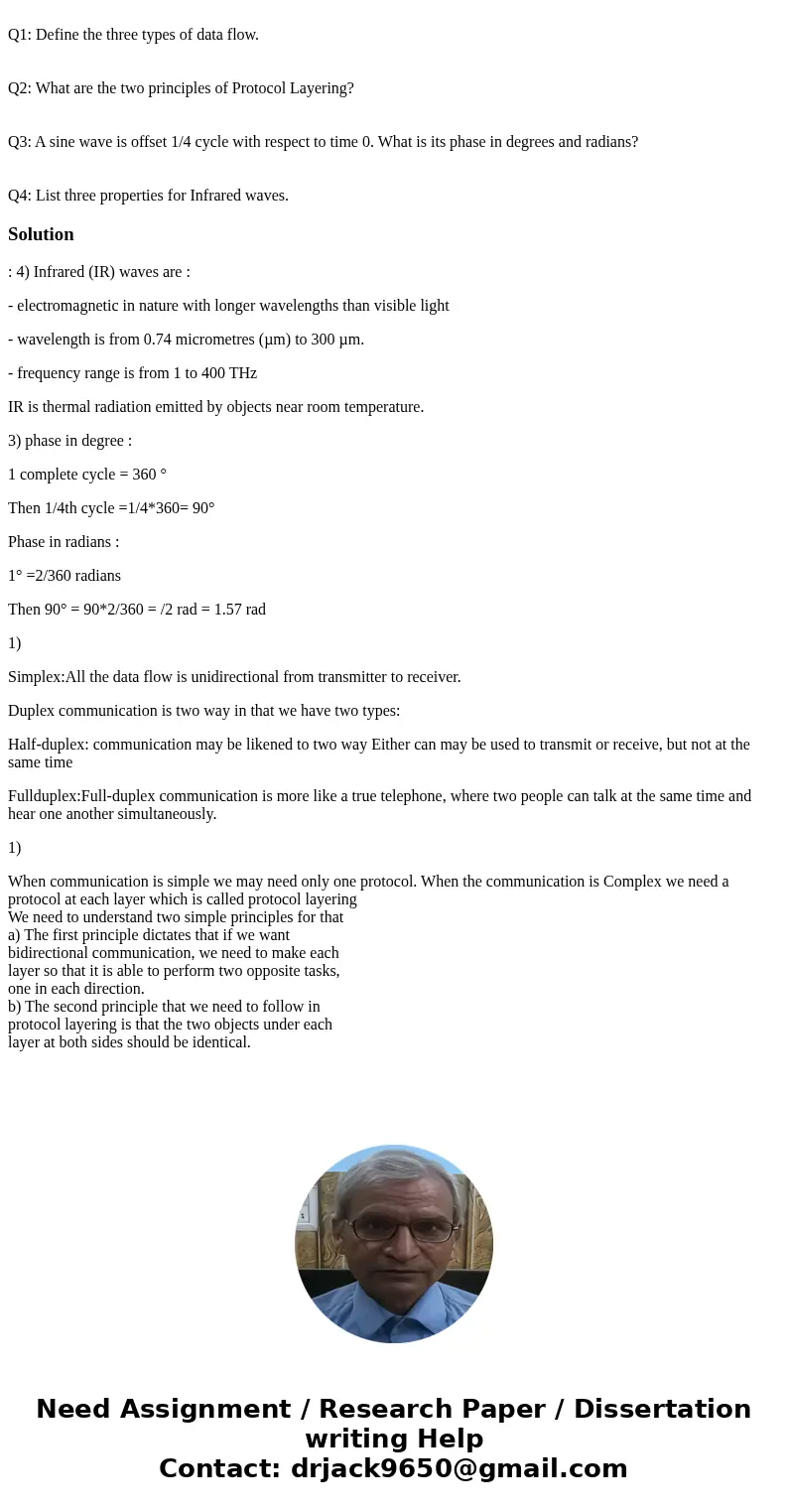Q1 Define the three types of data flow Q2 What are the two p
Q1: Define the three types of data flow.
Q2: What are the two principles of Protocol Layering?
Q3: A sine wave is offset 1/4 cycle with respect to time 0. What is its phase in degrees and radians?
Q4: List three properties for Infrared waves.
Solution
: 4) Infrared (IR) waves are :
- electromagnetic in nature with longer wavelengths than visible light
- wavelength is from 0.74 micrometres (µm) to 300 µm.
- frequency range is from 1 to 400 THz
IR is thermal radiation emitted by objects near room temperature.
3) phase in degree :
1 complete cycle = 360 °
Then 1/4th cycle =1/4*360= 90°
Phase in radians :
1° =2/360 radians
Then 90° = 90*2/360 = /2 rad = 1.57 rad
1)
Simplex:All the data flow is unidirectional from transmitter to receiver.
Duplex communication is two way in that we have two types:
Half-duplex: communication may be likened to two way Either can may be used to transmit or receive, but not at the same time
Fullduplex:Full-duplex communication is more like a true telephone, where two people can talk at the same time and hear one another simultaneously.
1)
When communication is simple we may need only one protocol. When the communication is Complex we need a protocol at each layer which is called protocol layering
We need to understand two simple principles for that
a) The first principle dictates that if we want
bidirectional communication, we need to make each
layer so that it is able to perform two opposite tasks,
one in each direction.
b) The second principle that we need to follow in
protocol layering is that the two objects under each
layer at both sides should be identical.

 Homework Sourse
Homework Sourse